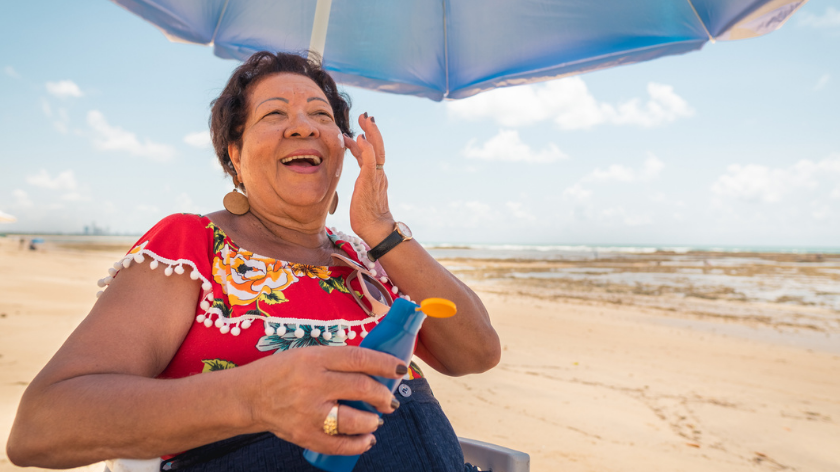Because skin cancer runs in my family, my mom told me at an early age to make sure that I applied sunscreen when I was going to be out in the sun. I was a prime candidate for skin cancer: pale skin, blonde hair, and light-colored eyes due to my Polish/German heritage, lots of freckles, and having had sunburns in the past. Yet, I can recall the days of being a teenager and spending countless hours of the summer day at the beach or at the pool with the intention of getting as tan as I could and not giving too much thought to sun safety. The advice to sunscreen – no way! It was all about slathering on pure baby oil or a tan accelerator to maximize the sun’s rays and get that bronzed glow!
Fast forward to today, where those years of sun damage are apparent each time that I visit my dermatologist for a skin check. During these office visits, moles and freckles on my skin are observed with certain ones having picture progressions to watch and see if major changes occur from visit to visit, and if action is required. Countless biopsies have been scheduled to determine if moles need to be removed because they are pre-cancerous. Terms like atypical moles or melanoma are used quite frequently. I’ve had stitches to help close incisions where moles have been excised.
On every visit to the dermatologist we keep tabs on the A, B, C, D, E’s for early detection of skin cancer:
A = Asymmetrical
Does the mole have a look that is not the perfect round or oval shape?
B = Border
Are the edges rough or uneven?
C = Coloring
Is it a normal shade of brown – or has the pigment changed colors or darkened?
D = Diameter
Is the size of the mole larger than a pencil eraser?
E = Evolving
Has anything changed over time with any of the indicators above?
Usually, if the answer is yes to any of the above – the doctor will monitor the area more closely. Skin cancer is preventable and treatable when caught early.
I only wish I could go back and tell my younger self to be smart and listen to the advice from my mom about protecting my skin from the sun. While I still very much enjoy being out in the sun and participating in outdoor activities on the water in the summer, I pay much closer attention to how I stay safe to protect my skin from further damage.
These days I have taken steps to take precautions in trying to minimize the damage that has been done over many years. I schedule at least two visits a year with my dermatologist. I use sun lotion with an SPF of at least 30+, re-applying often and after being in the water for extended periods of time. There are some areas of my body like my back and abdomen that I now keep covered due to having a high quantity of moles in those areas. Hats and sunglasses are also key to providing coverage to my scalp, ears, and face. Finding a place in the shade is also a great place to relax, catch up on a good book or take a nap. I do believe in the benefits of being outside in nature, and the power of a dose of natural Vitamin D from the sun; however, I am now much more cautious about how I can enjoy the sunshine while staying safe.
Janine is an Implementation Manager with Vitality. She holds a B.S. in Exercise Science/Sport Management from Rutgers University, as well as many certifications within the fitness and nutrition industry. She loves being a spectator at her daughters’ athletic events, participating in water sport activities with her family, writing on sticky notes, over-consuming almond butter, and taking hot yoga classes. For relaxation, she enjoys baking, taking naps in hammocks, and listening to podcasts.








